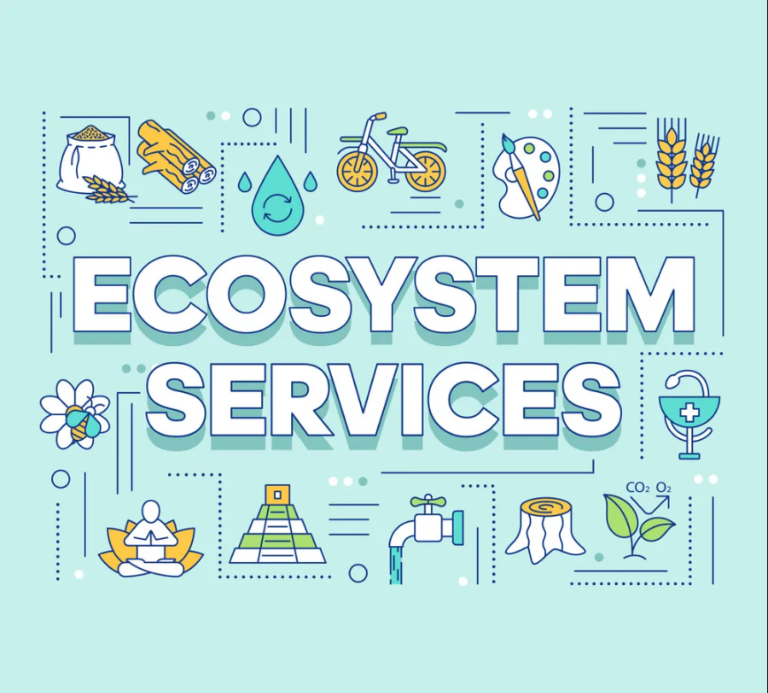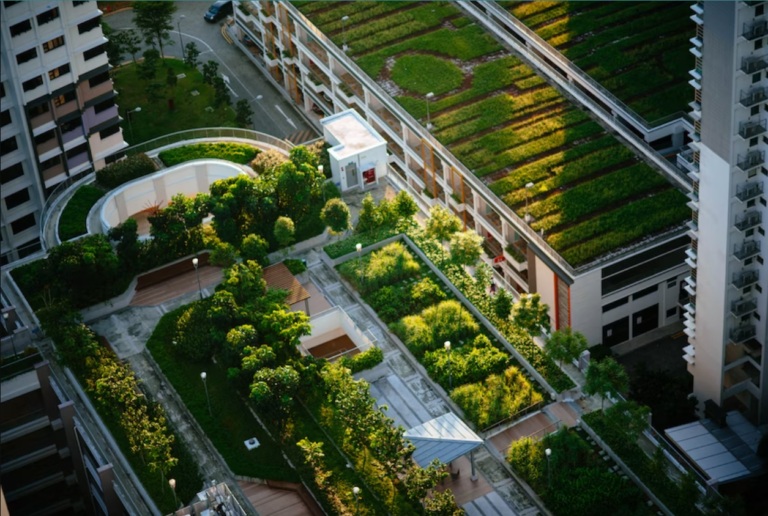What is the cost of the oxygen you breathe? If you are like me and occasionally ponder on arbitrary topics once a day, you would have thought about it. A healthy environment has very many ecological benefits, but what about economic benefits? In a world driven by economic benefits, the environment is often seen as an economic liability. The environmentalist in you might be discouraged by this but let me put you at ease. Environmental economists have some tricks up their sleeves to monetize some seemingly non-capitalistic commodities. But before we dive into their bag of tricks, let’s understand how these environmental services can be monetized.
What is an ecosystem service?
By definition, any direct or indirect contribution of the ecosystem to human well-being impacting our survival and quality of life is an ecosystem service. The ecosystem provides us with food, water and fuel. Various components of the system work together to regulate the environment. For example, tree’s roots hold the soil and prevent erosion mitigating floods. An ecosystem’s functioning is also supported by several natural processes. Such as, plants doing photosynthesis which provides us food or we get potable water because of the water cycle. Besides, the ecosystem also aids in intellectual development, recreation and aesthetic enrichment. From pollinators pollinating to decomposers decomposing. Every tiny being is working in their own little world for you to enjoy the first blossoms of the spring.

How do you estimate the cost of nature?
On an annoyingly warm day, when you feel like having an ice-cream you would go to an ice cream parlor, fish out some change and treat yourself. The cost of your ice cream depends on several factors: your demand and the store’s ability to sell it . But unlike your ice cream, ecosystem service cannot be sold or bought. So how do you find their value? Broadly speaking, there are three ways to find the value of an ecosystem service.
Imagine there is only one ice cream shop in your city, and it sells a unique flavor of ice cream. The price of this ice cream will depend on two factors – an internal factor (the unique ice-cream flavor) and an external factor (the lack of any other ice cream parlor). Likewise, an ecosystem service can be compared to another dependent factor to determine its market price. A house located near a clean river would sell for a higher price than a house next to a sewage canal. Hence, the clean river will be assigned a greater value.
Now, consider that everyone in your city suddenly decides they don’t want to pay a fortune for that uniquely flavored ice cream. Then the shop would need to reduce the price. So your willingness to pay would then determine its value. This method is generally used to determine the value of those ecosystem services that cannot be ‘directly used’. For example, how much would a tourist be willing to pay to visit a national park in another country?
Lastly, imagine that everyone chooses to have a cold glass of water over having an ice cream, the value of the ice cream would decrease. So, if an ecosystem provides a service that would save the cost of a non-natural service it would be an avoided cost. For instance, mangroves create a barrier between the sea and the coast. This barrier protects the coast from tsunamis and avoids costs related to infrastructural damage.

How much does the oxygen you breathe cost?
So circling back to our arbitrary topic of the day, how much does the oxygen you breathe cost? The US Department of Agriculture estimates that, on average, a tree produces enough oxygen in a day to sustain four people. If you compare the cost of oxygen production in the industry, you can estimate the money saved. For example, as per a study conducted in Beijing China, it costs about 580$ to produce one ton of oxygen in the industry. But, the value of the oxygen released by woodland areas was about 118,883$. A review on using greenery to mitigate urban heat demonstrated that ground-level greenery reduced heat up to 9℃ while green roofs and green walls reduced surface temperatures by up to 17℃. When scientists studied four cities in the USA, they found that the cost of cooling was reduced by up to 61% which is about $249/tree/year. The same study also found the annual savings from trees providing shade on rooftops resulted in annual savings ranging from $0.1 to $0.23 per square meter of roof area. In addition to providing a direct advantage, trees also help the urban environment by removing pollution. For example, green roofs are capable of absorbing dangerous nitrogen compounds from the air and save up to 6$ per tree in a year of pollutant removal costs.

Not just green but also blue!
If you remember from our previous article ‘What’s that blue in the green?’ a city’s water infrastructure is intricately woven with the green infrastructure. This blue component also has economic benefits. A city has an estimated cost of $2.71 of infrastructure management for areas that do not let the water seep into the ground. A study near Chicago found that including green infrastructure helps them avoid about $340 per acre of maintenance costs. Another study, in Seattle, showed that the city saved a whopping $100,000– $235,000 per block when stormwater was directed in bioretention systems. According to a study done by the Bureau of Environmental Services Oregon, impermeable areas that hinder water percolation add about $2.71 for every square foot of infrastructure costs needed to manage stormwater runoff. On the other hand, a green roof could collect over 50% of runoff and can save the city up to $7,588!

A better place to live?
According to a report published by the UN in 2018, by 2050 over 68% of the global population will move to urban areas. Hence, it is vital to consider quality of life in the cities. Urban green infrastructure can be designed to increase livability. In Pennsylvania, the Green City Clean Waters plan estimated that the use of green infrastructure would generate around $350 million in recreational trips over a 40-year period. In 2009, the estimated cost was $520 million. It is no secret that a stroll in the park can lift your mood instantly. A research team at the University of Illinois found that “exposure to green surroundings reduces mental fatigue and the feelings of irritability that come with it. Even small amounts of greenery helped inner city residents create safer, less violent domestic environments.” Therefore, it is no surprise that houses near green areas add $8,870 to sale prices.

Green infrastructure can promote ‘community cohesion’, improving the networks of formal and informal relationships among neighborhood residents that foster a nurturing and mutually supportive human environment. Urban nature also has benefits in promoting education, like sustainable drainage systems can be utilized to educate the public on the efficient use of water resources. Community gardens can be used to introduce native biodiversity to people through nature trails. It gives an opportunity to include the citizens to be included in planning, executing and managing these green spaces.Thus it is crucial that urban green spaces support healthier urban ecosystems and provide the city with a myriad of beneficial services that have the potential to be capitalized on. However, we are left with one impeding question. Should we perceive and respect nature for its capital gain or its inherent value?
Key takeaways:
- Environment has direct and indirect economic benefits.
- An ecosystem’s value can also be determined by money it saves us.
- Urban green infrastructure enhances the livability of cities, providing recreational opportunities and improving aesthetics.
Do you want to know more?
- Effect of ecosystem services provided by urban green infrastructure on indoor environment: A literature review: http://dx.doi.org/10.1016/j.buildenv.2014.03.021
- The Value of Green Infrastructure, A Guide to Recognizing Its Economic, Environmental and Social Benefits: https://cnt.org/sites/default/files/publications/CNT_Value-of-Green-Infrastructure.pdf